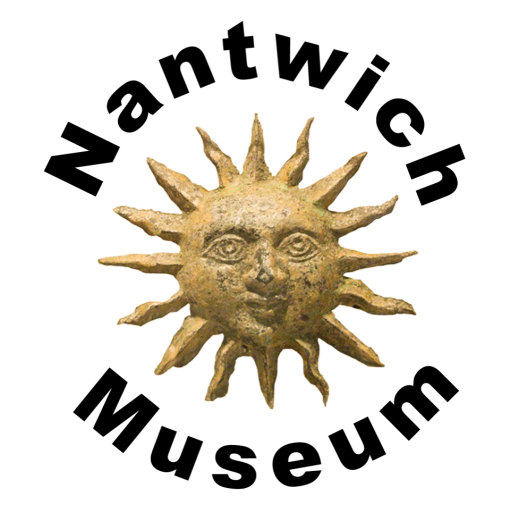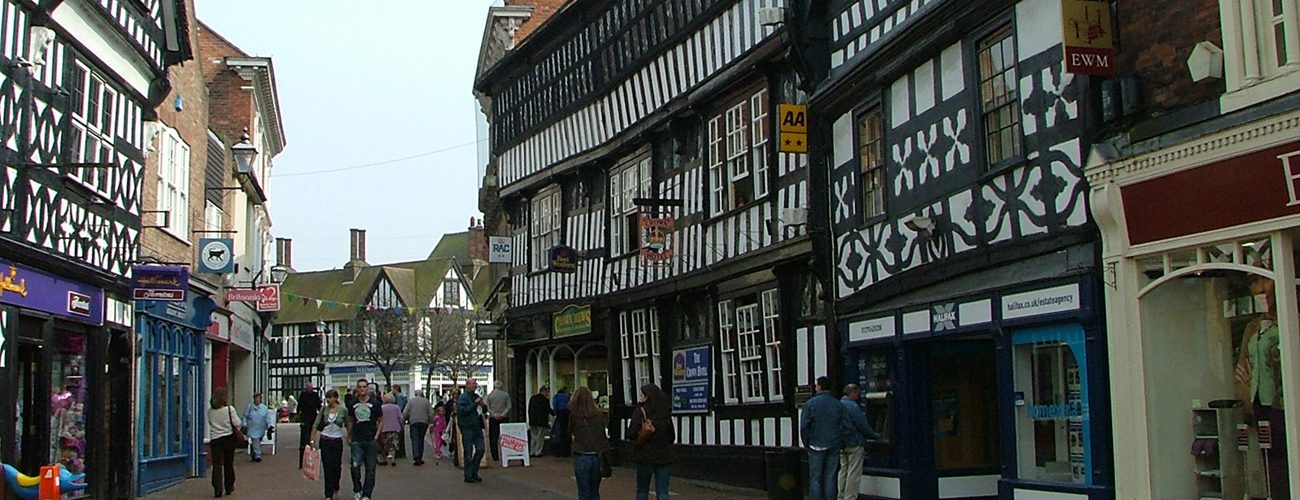A History of the house & yard
Written by Allan Whately in 1996
In 1878 a committee was set up in Nantwich ‘to consider the establishment of a cocoa house or rooms as an alternative to the beerhouse’. At that time, there were about 45 inns, alehouses and beerhouses in the town. In Pillory Street there were nine!
At No 3 Albion, later Shoulder of Mutton, later Golden Lion or Green Lion
At No 5 George, or George and Dragon
At No 15 The Swan, later the White Swan
At No 22 The White Horse
At No 55 London & North Western Railway beerhouse
At No 71 The Railway Inn
There was also the Star Vaults; The Wheatsheaf; The Horse and Groom.
The Three Cups Cocoa House was opened on 26th of December 1878 in the former showrooms and workshop of Price & Wilding, formerly Groucott, Price & Wilding. This was on the west side of Pillory Street.
The report of the opening ceremony takes a whole column in small print in the Nantwich Guardian of December 28th, 1878. The Rev. F.G. Blackburne was chairman of the company set up to create ‘The Three Cups’. Eight hundred and ninety two £l shares had been bought. He explained the new amenity was for the benefit of all classes.
William Tollemache, who declared the building open, seemed to view it as mainly for the working classes. He said he had seen similar establishments in three other towns in Lancashire and Cheshire. It was hoped that a system of ticket tokens might be introduced.
Samuel Harlock also spoke. He felt that the new Cocoa House would be a real alternative to the beerhouse. He looked forward to a second and more cocoa houses being opened in the town before long.
The accommodation comprised: a large room on the ground floor, three rooms upstairs for tearooms, one room for ladies only, a parcel room and a business room. It was intended to provide stabling for horses soon.
The winter of 1878/79 was very severe and no doubt ‘The Three Cups’ was well patronised. On the first day open 78 gallons of drink were sold!
For one halfpenny you could buy a cup of cocoa or coffee, for one penny, a cup of tea or a bowl of soup. You could also read the newspapers. So this new type of service was rather like the London coffee house of long ago and something like the new Public Libraries since 1850, but then Nantwich did not have one.
The history over later years shows:
December 1879 Penny tokens could be used.
January 1880 A Penny Bank was opened in ‘The Three Cups’. One could save up to £5 and then have it transferred to a Post Office Savings Bank. A separate room for ladies to sit, drink read and chat was opened.
February 1880 The dividend paid was 4d per share.
July 1880 The Penny Bank had 288 depositors with an average of E15.5s.8d each. There were 490 accounts with a total of £91.13s.6d deposited
October 1880 A new manager. Rooms were made available for reading newspapers or for playing table games for a small charge.
1888 Annual Report gave these figures: 99,540 cups of tea, coffee or cocoa sold, 49,280 cakes at 1d each and 27,074 at 2d each, 5,490 quarts of milk sold, 3,9231b of ham, 2,268b of beef, 2,1461b of mutton sold, 6001b of butter sold, 7,680 bottles of ginger beer sold and groceries worth £20.6s.9d.
In 1897, the business was moved across the road to No. 21, the present three- storey red brick building – The Victoria Cocoa House – featured on a postcard view of Pillory Street showing iron railings in front of the Free Library. An advertisement appeared just before it opened. It was to develop into a restaurant serving luncheons, dinners and teas ‘on the shortest notice’. There would be a ‘commercial room’ for businessmen, meeting rooms for societies and clubs. Moreover, there would be reading, recreation and bath rooms. ‘Cyclists will be well attended to, and tired nature will be revived by sleeping accommodation of the most satisfactory kind’.
‘A convenient Cloak and Parcel Room will supply a want which has been long felt and capital stabling accommodation will also be afforded. Terms strictly moderate throughout’.
The manager was Thomas Dutton.
An advertisement in a 1912 directory informs us that there was: ‘Special catering for Sunday School treats, dances, picnics, garden parties, etc. It was ‘A house of call for the Cyclists
Touring Club‘ while ‘Commercial men find absolute comfort at extremely moderate charges. Large light airy bedrooms‘.
In an advertisement in Johnson’s Almanack for 1912 the Cocoa House had become Victoria Temperance Hotel, managed by Mr R. Picken. T. W. Freeman writing in 1992 said ‘jovial Mr Picken’ was providing excellent teas in competition with others in the town. There were often many horses in the yard.
After that it seems to have declined and closed.
In 1939, Wright’s Yard (i.e. the Cocoa Yard) had two houses occupied. There was a blacksmith named Joinson, and his apprentice living near.
The building was used as once uses as offices for the Nantwich Urban District Council for some years and later, up to 1972, as a Social Services Department. With local government re-organisation, the building passed to the Cheshire County Council and remained empty for some 20 years. It was a Grade Il listed building.
In the 1980s and 1990s proposals from various developers were received. The first was for a building of 10 shops and 11 flats in the Yard and the restoration of the Cocoa House. This was approved but fell through due to the economic difficulties of those years.
In 1992 Nantwich Civic Society protested about the state of the main building on Pillory Street. There were broken windows on three sides. It was feared rain would cause further that deterioration, pests would invade and the building would become a health hazard.
A second developer rescued the Cocoa House in 1992/3 and two businesses began in 1993. Further restoration took place on the buildings in the yard. Three of these became businesses by the end of 1993. Living accommodation was also made available on the upper floors.
Part of the yard forming the passage from Pillory Street to Hospital Street was paved, flower beds, lamp standards and litter bins provided. The tall chimney of the ‘one-time cooper’s kiln has been preserved to form a central feature – as does the large metal archway reading COCOA YARD over the entrance from Hospital Street. Now, at the present time, more development has occurred and the site is now very impressive.
This article was given to the museum by local historian Allan Whatley, before he died in 2017. It also appeared in the Cheshire Genealogist (the magazine of the South Cheshire family History Society) in Autumn 1996.

